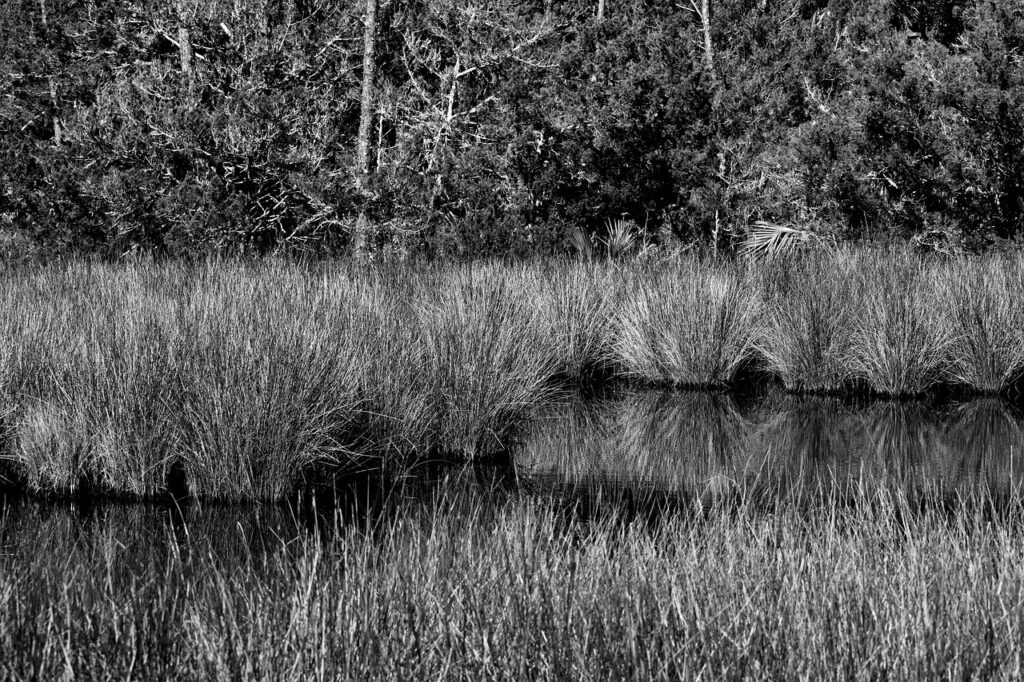
Ever wonder what happens when a river decides it’s had enough of the surface world? When it chooses to plunge into the earth’s embrace, vanishing like a thought that slips away before you can pin it down with words? There’s a place where you can witness this very phenomenon – a place where water plays hide and seek with solid ground, where time collapses in on itself, and where the ghosts of ancient beasts might still lumber through the mists of memory.
I’m talking about the Aucilla Sinks in northern Florida.
See, most rivers have the decency to stay put, to follow their appointed channels from source to sea. Not the Aucilla. This river has ideas of its own. It flows along like any other river until suddenly – poof! – it disappears underground, only to bubble up again downstream in what geologists call “karst windows.” It’s as if the river is playing a cosmic game of peek-a-boo with anyone who cares to follow its journey.
What we’re witnessing is limestone doing what limestone does best – dissolving, creating pockets and caves and sinkholes. But that’s just the scientific explanation, the map rather than the territory. When you’re standing at the edge of one of these sinks, watching dark water swirl into the depths, science feels like just one possible interpretation among many.
Think about it: it is said that 12,000 years ago, a Paleoindian hunter stood at this very spot, watching a mastodon drink from the same waters. We know this happened. They found a stone knife alongside mastodon bones in one of these sinks – evidence of one of the earliest human occupations in the southeastern United States. That hunter and I, separated by twelve millennia, shared the same view. The same questions might have formed in both our minds: Where does the water go? What dwells in the darkness below?
Time thins in places like this. The distinction between past and present becomes as porous as the limestone itself.
Later, Seminole warriors hid in these swamps during their desperate resistance against removal. Enslaved people modified the waterways, connecting rivers, their labor forever inscribed in the landscape. The Aucilla holds these histories like the limestone holds the water – sometimes visible, sometimes hidden, but always there, shaping what comes after.
Walking the trail that winds among the sinks, you move through what feels like a fragment of primeval Earth. The dense canopy of hickories and oaks and magnolias filters the sunlight into patterns that shift and dance. The air hangs heavy with moisture and the sweet rot of vegetation. Wood thrushes call from the shadows with voices like water made sound.
I find myself wondering if consciousness isn’t something like this river – appearing here, disappearing there, following channels we can’t always see. Our thoughts surface into awareness, then sink back into some subterranean flow, only to emerge transformed downstream.
The Aucilla doesn’t simply vanish, of course. It finds another path, unseen but no less real. Water always seeks connection – with more water, with the sea, with the endless cycle of evaporation and precipitation that binds everything together. Perhaps there’s wisdom in that for us bipedal mammals who spend so much time forgetting our own connectedness.
So if you find yourself in northern Florida with an afternoon to spare and questions about time and impermanence weighing on your mind, seek out the Aucilla Sinks Trail. Watch the river disappear. Listen to the whispers of mastodons and ancient hunters, of Seminole warriors and enslaved canal-builders. Feel the thin places where past touches present.
And maybe, just maybe, you’ll catch a glimpse of your own depths – the underground rivers of consciousness that flow beneath the surface of everyday perception.
Just watch your step. Those sinkholes can be deceptively deep.



Leave a Reply